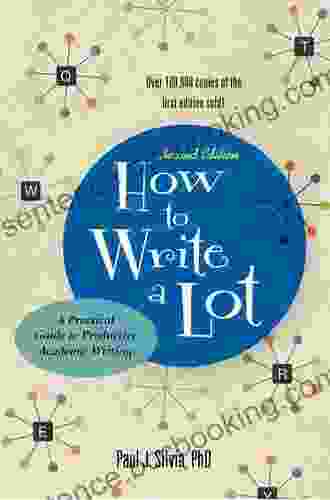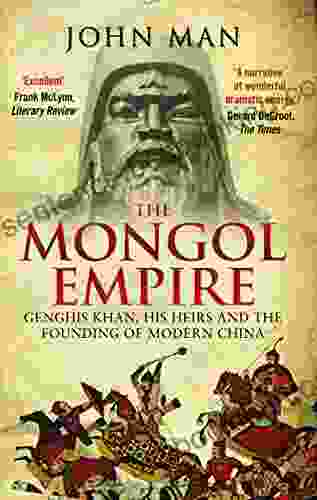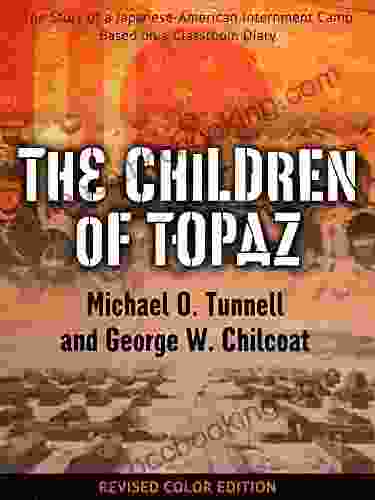The Story of Japanese American Internment Camps: A Poignant Journey into a Dark Chapter

During the tumultuous era of World War II, a dark chapter unfolded in American history, forever etching itself into the collective memory of a nation: the internment of Japanese Americans. Thousands of innocent civilians, stripped of their freedoms and dignity, were unjustly incarcerated in desolate camps scattered across the Western United States.
The Roots of Prejudice and Fear
The seeds of internment were sown long before the outbreak of war. Anti-Japanese sentiment had been simmering in the United States for decades, fueled by a combination of economic competition, cultural differences, and a perceived threat to national security. The bombing of Pearl Harbor on December 7, 1941, served as a catalyst, igniting a wave of panic and suspicion that targeted Japanese Americans, regardless of their loyalty or citizenship.
4.7 out of 5
| Language | : | English |
| File size | : | 23187 KB |
| Print length | : | 109 pages |
| Lending | : | Enabled |
| Screen Reader | : | Supported |
Executive Free Download 9066: A Betrayal of Trust
On February 19, 1942, President Franklin D. Roosevelt signed Executive Free Download 9066, which authorized the Secretary of War to designate "military areas" from which any person could be excluded. This sweeping authority paved the way for the mass evacuation and internment of Japanese Americans living on the West Coast.
The Devastating Impact of Internment
Within a matter of months, over 120,000 people of Japanese descent were forcibly removed from their homes and businesses. They were herded into hastily constructed camps, often located in remote and inhospitable areas, where they endured harsh living conditions, inadequate sanitation, and a constant sense of uncertainty.
The emotional toll on the internees was profound. Families were torn apart, children were separated from their parents, and dreams were shattered. The camps became a symbol of injustice and a betrayal of the American values of freedom and equality.
Life Inside the Barbed Wire Fences
The daily routine in the camps was regimented and monotonous. Internees were assigned to barracks-style housing, where they lived in cramped and unsanitary conditions. They worked long hours in menial jobs, received meager rations, and had limited access to healthcare and education.
Despite the oppressive conditions, the internees found ways to cope and maintain a sense of community. They organized schools, held religious services, and created artistic expressions that captured the resilience and spirit of their ordeal.
The Fight for Justice and Redress
Even behind barbed wire, the internees did not give up hope. They fought for their rights through legal challenges, political activism, and public education. After the war, they formed organizations to demand reparations and an official apology from the government.
In 1988, Congress passed the Civil Liberties Act, which formally apologized for the internment and provided compensation to surviving internees. However, the legacy of this dark chapter continues to resonate today, serving as a reminder of the fragility of civil liberties in times of fear and prejudice.
Preserving the Memory: The Manzanar National Historic Site
One of the most poignant reminders of the internment era is the Manzanar National Historic Site in California. This former camp has been designated as a National Historic Landmark and serves as a place of remembrance and education. Visitors can explore the reconstructed barracks, watchtowers, and cemetery, gaining a firsthand glimpse into the lives of those who endured this tragic chapter in American history.
The story of Japanese American internment camps is a complex and deeply moving one. It is a tale of injustice, resilience, and the enduring power of the human spirit. As we remember the victims of this dark period, we must also recommit ourselves to the principles of justice, equality, and the protection of civil liberties for all.
4.7 out of 5
| Language | : | English |
| File size | : | 23187 KB |
| Print length | : | 109 pages |
| Lending | : | Enabled |
| Screen Reader | : | Supported |
Do you want to contribute by writing guest posts on this blog?
Please contact us and send us a resume of previous articles that you have written.
 Book
Book Novel
Novel Page
Page Chapter
Chapter Text
Text Story
Story Genre
Genre Reader
Reader Library
Library Paperback
Paperback E-book
E-book Magazine
Magazine Newspaper
Newspaper Paragraph
Paragraph Sentence
Sentence Bookmark
Bookmark Shelf
Shelf Glossary
Glossary Bibliography
Bibliography Foreword
Foreword Preface
Preface Synopsis
Synopsis Annotation
Annotation Footnote
Footnote Manuscript
Manuscript Scroll
Scroll Codex
Codex Tome
Tome Bestseller
Bestseller Classics
Classics Library card
Library card Narrative
Narrative Biography
Biography Autobiography
Autobiography Memoir
Memoir Reference
Reference Encyclopedia
Encyclopedia John D Barrow
John D Barrow Lisa Corbitt
Lisa Corbitt John Glatt
John Glatt John E Marthinsen
John E Marthinsen Neil Wilson
Neil Wilson Kris Timmermans
Kris Timmermans John Howells
John Howells Sheri Thomas
Sheri Thomas John D Gartner
John D Gartner Terence Smith
Terence Smith John Endris
John Endris Jim Mathis
Jim Mathis Helena Wulff
Helena Wulff Stefan H Thomke
Stefan H Thomke Roald Amundsen
Roald Amundsen John Mcphee
John Mcphee Micha Gorelick
Micha Gorelick John H Cunningham
John H Cunningham Jm Mason
Jm Mason Leisa Rundquist
Leisa Rundquist
Light bulbAdvertise smarter! Our strategic ad space ensures maximum exposure. Reserve your spot today!

 Chase MorrisHow to Write a Lot: A Comprehensive Guide to Writing More, Better, and Faster
Chase MorrisHow to Write a Lot: A Comprehensive Guide to Writing More, Better, and Faster Bryan GrayFollow ·19.7k
Bryan GrayFollow ·19.7k Gil TurnerFollow ·14.1k
Gil TurnerFollow ·14.1k Forrest ReedFollow ·2.6k
Forrest ReedFollow ·2.6k Ben HayesFollow ·16.7k
Ben HayesFollow ·16.7k Dale MitchellFollow ·4.8k
Dale MitchellFollow ·4.8k Rob FosterFollow ·16.8k
Rob FosterFollow ·16.8k Shane BlairFollow ·15.1k
Shane BlairFollow ·15.1k Aaron BrooksFollow ·6.4k
Aaron BrooksFollow ·6.4k

 Jesus Mitchell
Jesus MitchellDiscover the World of Satisfying Meals with Or...
In a world where culinary creations often...

 Darius Cox
Darius CoxJourney into the Extraordinary Life of Kublai Khan: An...
Immerse Yourself in the Fascinating...

 Gil Turner
Gil TurnerThe Fourth Industrial Revolution: The Precariat and the...
In his groundbreaking book, The Fourth...

 Jonathan Franzen
Jonathan FranzenGenghis Khan: His Heirs and the Founding of Modern China
Genghis Khan, the...

 Eugene Powell
Eugene PowellJourney Through the Golden Age of the Ottoman Empire with...
Delve into the Enchanting World of the...
4.7 out of 5
| Language | : | English |
| File size | : | 23187 KB |
| Print length | : | 109 pages |
| Lending | : | Enabled |
| Screen Reader | : | Supported |












